Maple Sugaring Part 1, Tree Tapping
- At March 13, 2013
- By Nate
- In Local Happenings
 6
6
This time of year, for many, is Michigan at its ugliest… it is, after all, mud season. The attraction of bright, sunny skies and warm beaches found in the southern reaches of our country is no wonder in contrast to the long stints of cold, gray skies and the wet, sloppy mix of snow, rain, and mud found around here, but as Emerson said there is beauty in all seasons:
“To the attentive eye, each moment of the year has its own beauty, and in the same field, it beholds, every hour a picture which was never seen before, and which shall never be seen again.”
If you do stick around this time of year, I suggest finding a way to get involved with maple-syrup production. Grab the kids and head to a maple-syrup pancake breakfast at a place like Wagbo Farm, harvest from one of your own trees, or find a friend who’s already into it to tag along with, like I did. If you’ve been cooped up inside or find yourself generally out of touch with nature maple sugaring will pull you right back in or maybe even put you in touch for the first time. There are a lot of different-size operations out there but they all start by tapping trees at the magical time when winter is on the cusp of spring. Days need to be below freezing at night and above freezing (ideally in the 40s) during the day for sap to flow, be collected, and then boiled down into sap. There is a ton of boiling involved- sap-to-syrup ratio is 40 gallons to 1 gallon.
Matt McDonough, a co-worker and friend, is allowing me to “help” him this season and I’ll share what I see in a series of posts. Matt’s put his operation together over the past six seasons in classic Northern Michigan style, utilizing networking, innovation, ingenuity, and good old-fashioned elbow grease. The trees he taps are on a friend’s property, his sap buckets are re-purposed frosting buckets, the bucket lids are scraps from a sign company, and he welded his own evaporator, to give you a sense of how he does things. He also does most of the work himself but does contract out some of the heavy lifting to his son Sam and daughter Abby who you’ll meet in another post.
The photos in todays post are from tree-tapping day. In all, we put in 37 taps and tried a variety of spouts – Matt is always experimenting. In his operation tapping involves drilling into a maple tree a couple of inches, tapping in a spout with a wooden hammer, and hooking a bucket with a lid to the spout. The spout directs sap from the tree’s xylem, where energy-rich, sugary sap is transported from the tree’s roots to its branches, into the collection buckets. The actual physiological explanation of how sap moves is a mystery to me but I couldn’t help but be awestruck that a stream of sap flows straight up a tree for several weeks a year and there’s so much of it
siphoning off a few gallons doesn’t hurt it a bit. Oh and if you are wondering if the holes hurt the tree, doesn’t seem to, we saw a bunch from previous seasons that had completely closed up and healed! Needless to say I left the woods that day even more of a tree geek than I already was.

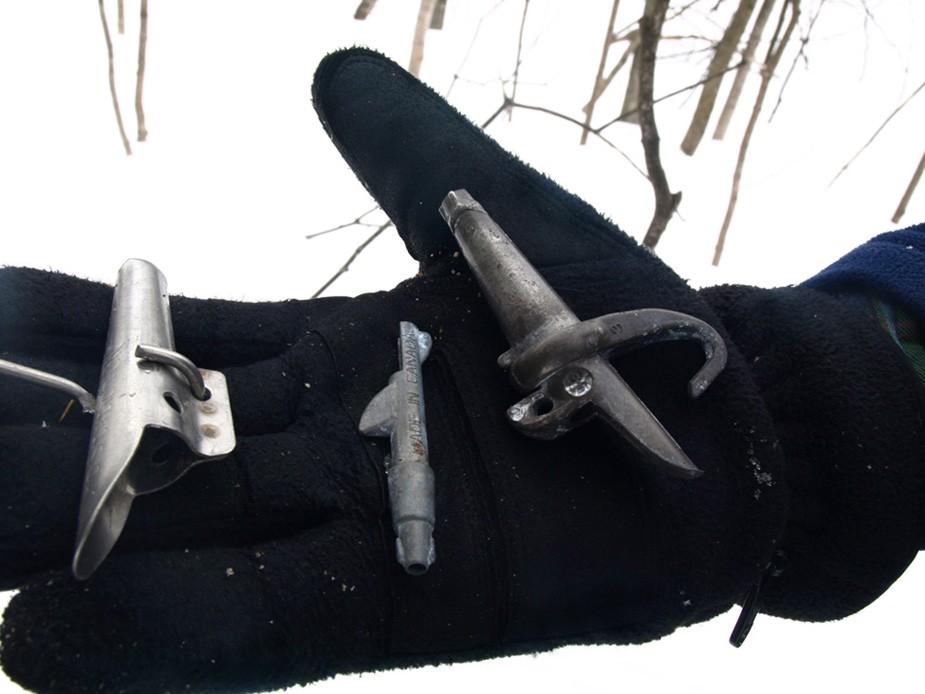
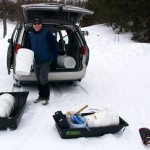

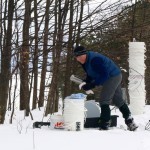


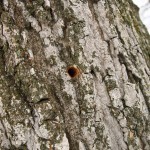
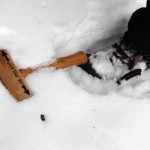

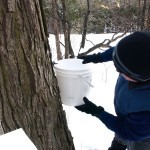
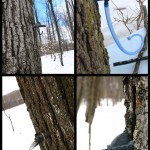
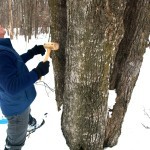
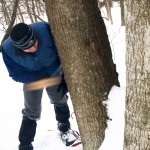

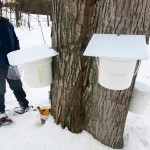
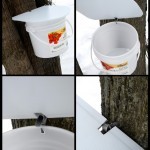
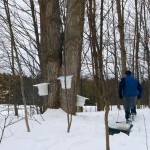




Steve Schwaiger
Nate, Good morning!!!
Thanks for the education. Looking forward to Part II and beyond.
Steve
Nate
Hello Steve! Thanks for reading. I look forward to sharing the rest of the process, collection and boiling… and maybe some tasting!
katy pearson
Wonderful, Nate! I like your photos a lot.
Nate
Thanks Kate! Stay tuned for more sappy posts.
Karen
Love the wooden hammer with directional arrows.
Nate
N Michigan humor for sure!